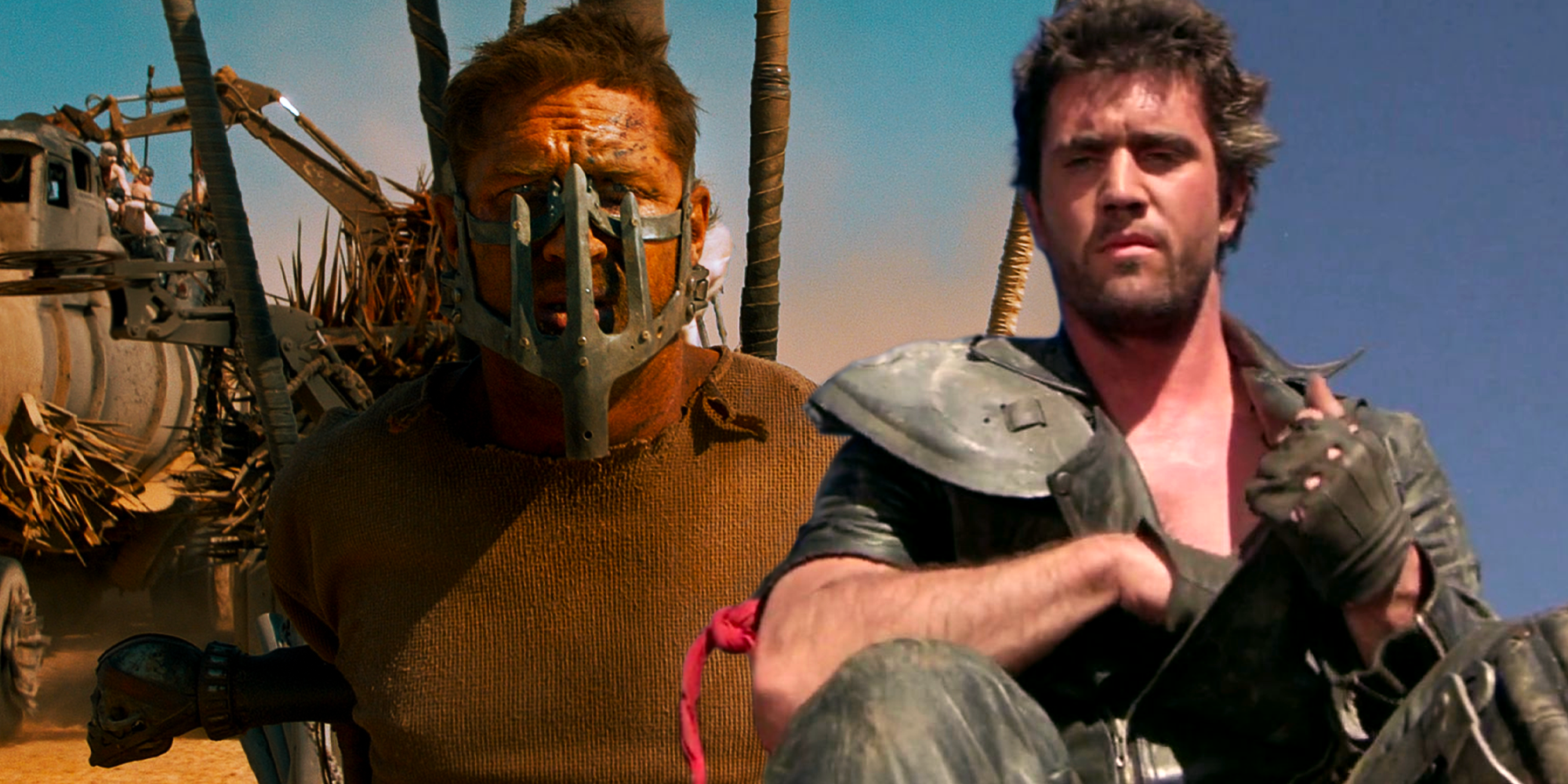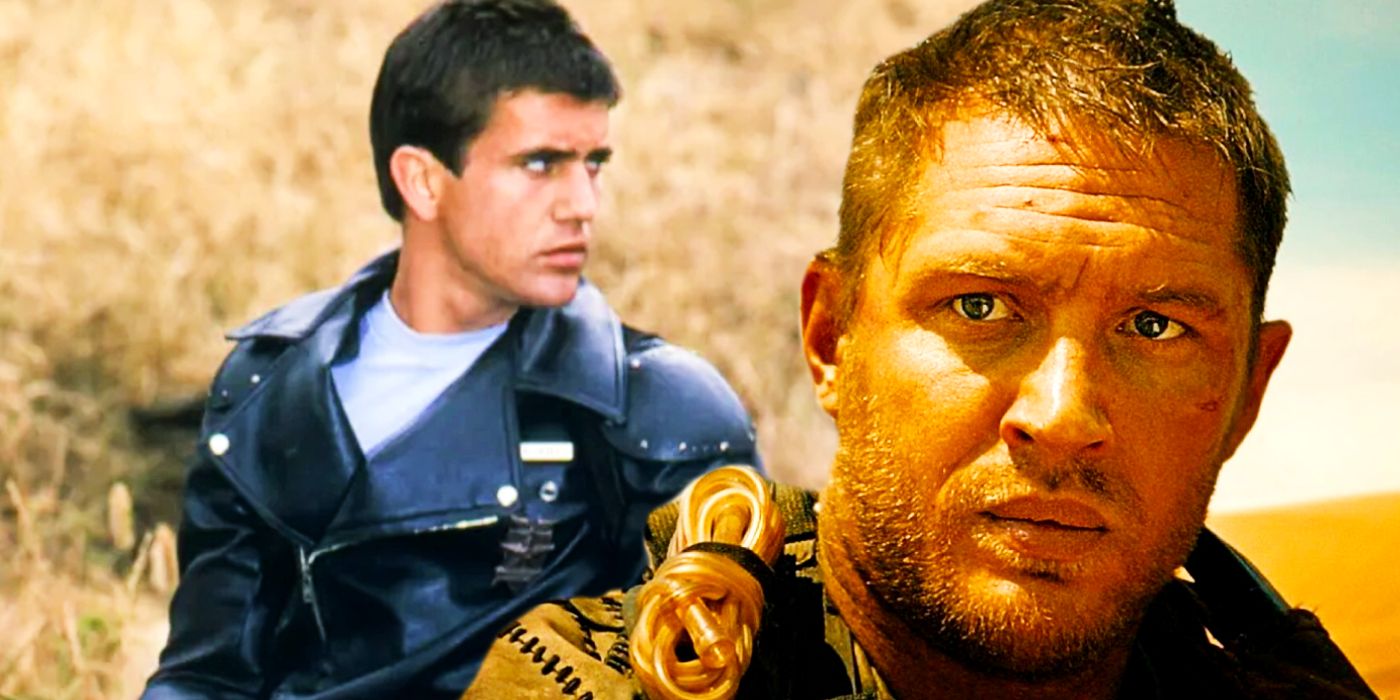Although many fans were surprised to see how different Tom Hardy’s unhinged portrayal of Max in Fury Road was from Mel Gibson’s more stoic version of the character, it was recently revealed that the sequel’s edgier antihero was originally written for Gibson. Thanks to a secret Easter egg, fans of the Mad Max movies now know that Mel Gibson and Tom Hardy’s Mad Max are the same characters. However, Max’s face was not all that changed between movie outings.
In 2015’s belated Mad Max sequel Fury Road, Max is more feral and jittery than ever before. As portrayed by Hardy, he has lost most of his ability to socialize with others and barely speaks throughout most of the sequel’s runtime. Many fans of the franchise like this reinvention, feeling that it set Hardy’s interpretation of the character apart from Gibson’s stern, but well-spoken, version of Max.
However, according to Kyle Buchanan’s 2022 book “Blood, Sweat & Chrome: The Wild and True Story of Mad Max: Fury Road, the unhinged elements of Hardy’s performance that made his Max so memorably different from Gibson’s were actually written into the original script with Mel in mind. Far from reinventing Mad Max, Fury Road's screenplay and storyboards instead endeavored to take the existing character to his logical conclusion. Per storyboard artist Mark Sexton, “the whole point was that there needed to be something at least a little bit fresh about taking Max further down into a basic level of almost inhumanity. The idea was that Max would start as completely insane. He’s been out there too long, and he’d lost what made him human.”
The idea was a radical divergence from earlier movies in the franchise, which mostly depicted Max as a rugged individualist but still a man with his wits about him (albeit one who is badly psychologically scarred). Roger Ebert’s favorite Mad Max movie, Beyond Thunderdome, took this even further, making the titular mad man sane enough to broker peace between warring tribes and take on an even more active heroic role in the story instead of acting as a gun for hire. In contrast, Fury Road was intended to portray the effects of decades spent wandering the wasteland as a solitary drifter, even when Gibson was intended to be the actor behind this troubled, mentally unwell antihero.
Fortunately, Tom Hardy made the part his own when Gibson aged out of the role, and the fact that the script changed Max substantially led most critics and fans alike to see his version of the character as a separate entity to the hero of earlier movies. Although Mad Max: The Wasteland’s much-delayed story will apparently expand on Max’s past further, Fury Road peppered in clever moments that displayed the depth of Max’s psychological trauma and its effects on his everyday existence. For example, when Max is captured near the movie’s opening, it is because he is distracted by a hallucination of a small girl whose life he failed to save. Moments like this made Hardy’s Fury Road portrayal of Mad Max different from Gibson’s more stable character, despite the role being written for the older actor.
Kyle Buchanan’s Blood, Sweat & Chrome: The Wild and True Story of Mad Max: Fury Road is out now.


